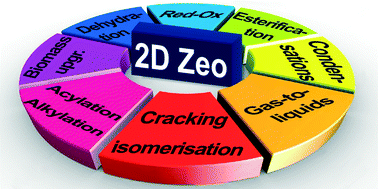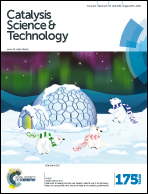Two-dimensional zeolites in catalysis: current status and perspectives
Abstract
Two-dimensional zeolites have been studied and developed as diverse and fundamentally new forms of 3D framework structures. They can produce structures such as pillared, delaminated, interlamellar expanded and others, offering improved access to active sites and enhanced diffusion of reactants and products. This has been useful in catalysis showing particular benefits for reactions of larger reactants. Primary layered zeolite forms have been obtained by direct synthesis and also by degradation of existing frameworks with built-in weaknesses. Additional forms are obtained by post-synthesis modifications. This contribution presents an overview of results from catalytic testing of various 2D zeolites especially in comparison to their conventional 3D counterparts.

- This article is part of the themed collections: 2016 most accessed Catalysis Science and Technology articles and Catalysis on Zeolites

 Please wait while we load your content...
Please wait while we load your content...